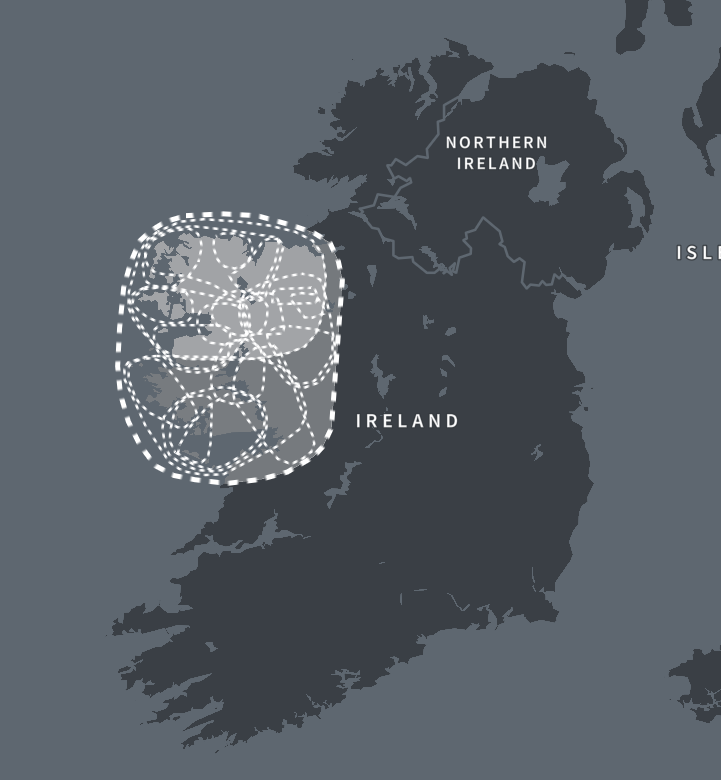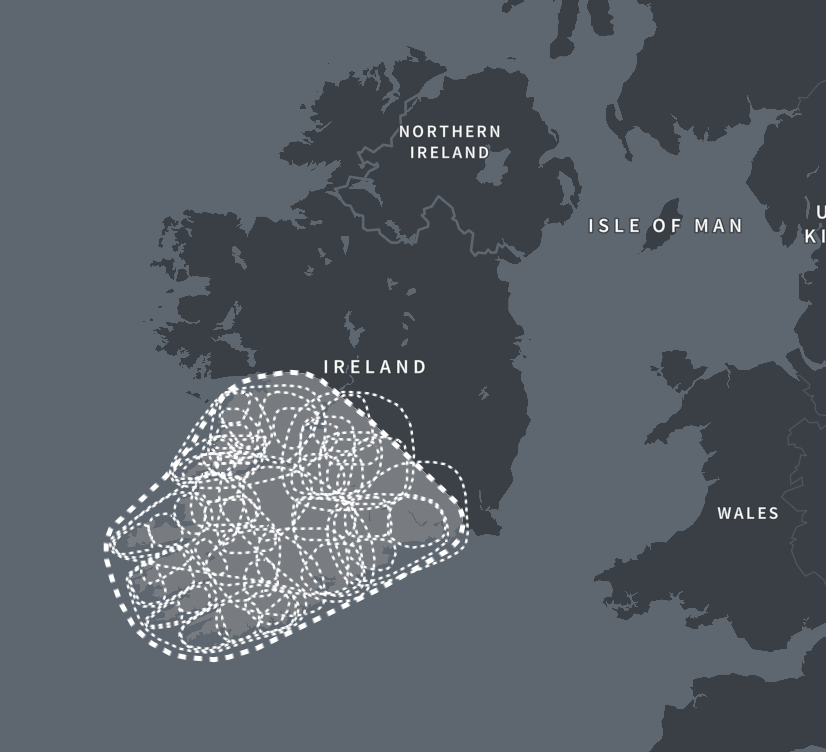What is [Ireland ](/blog/traditional-irish-naming-patterns-and-conventions/)DNA Ethnicity on Ancestry?
The results of our AncestryDNA tests may sometimes be what we expect or on occasion may be a big surprise. Either way, often we need a little more information regarding some of the regions that arise in our ethnicity estimates.
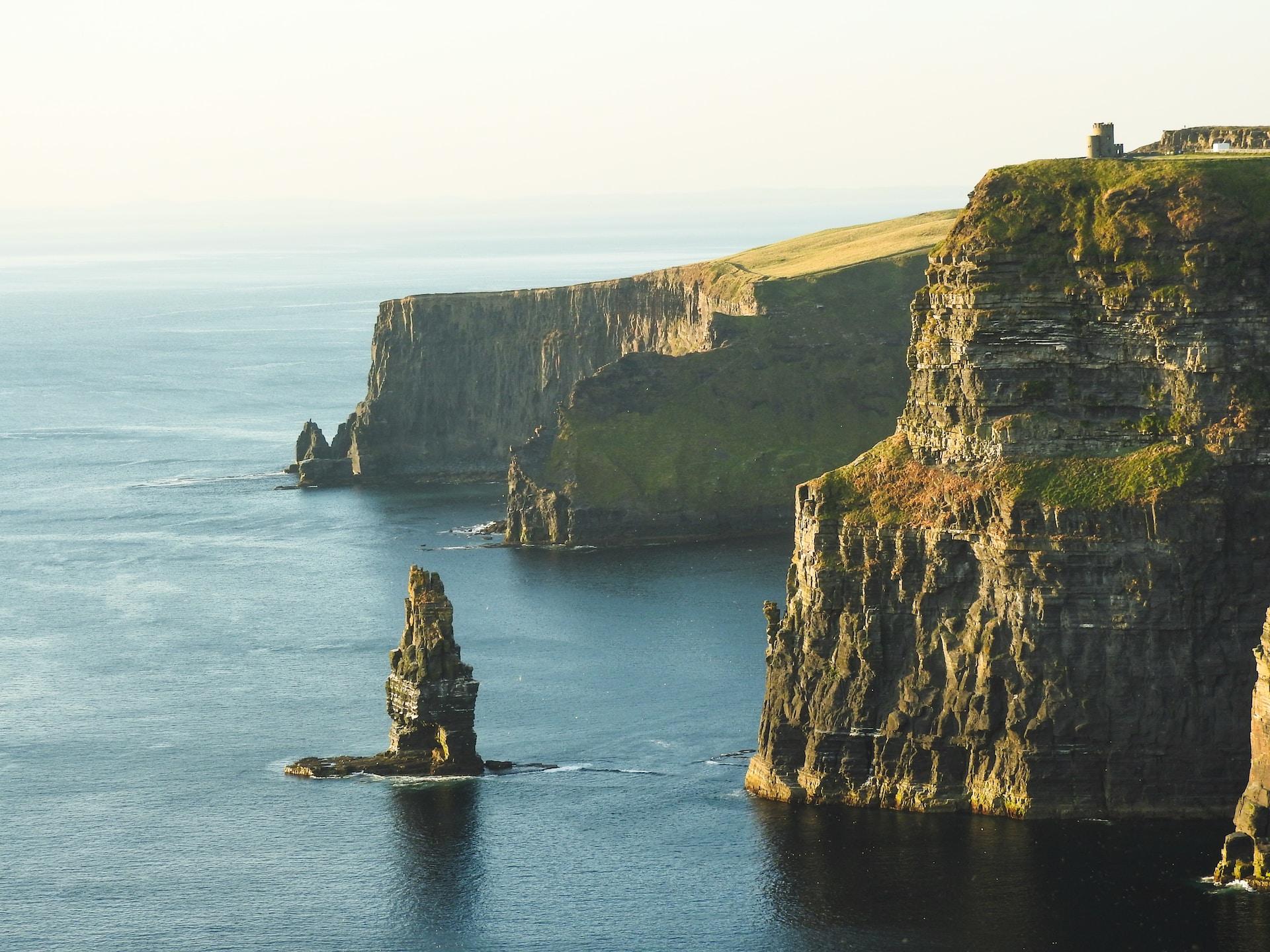
One region that is not at all uncommon is the Ireland DNA region. Those who still live in this region already understand all about its history and culture. There are others, however, who may never have even visited or in fact been aware that they have ancestors from that area.
In this post we will go into more detail with regards to the history, geography and culture of the Ireland region. We will also discuss what it means to be from this region and how easy or difficult it might be to trace our roots in the Ireland Region.
What Is the Ireland DNA Region?
The Ireland DNA region as the name suggests focuses on the countries of Northern Ireland and the Republic of Ireland. These two island nations in the Atlantic have the United Kingdom to the east and the United States to the west.
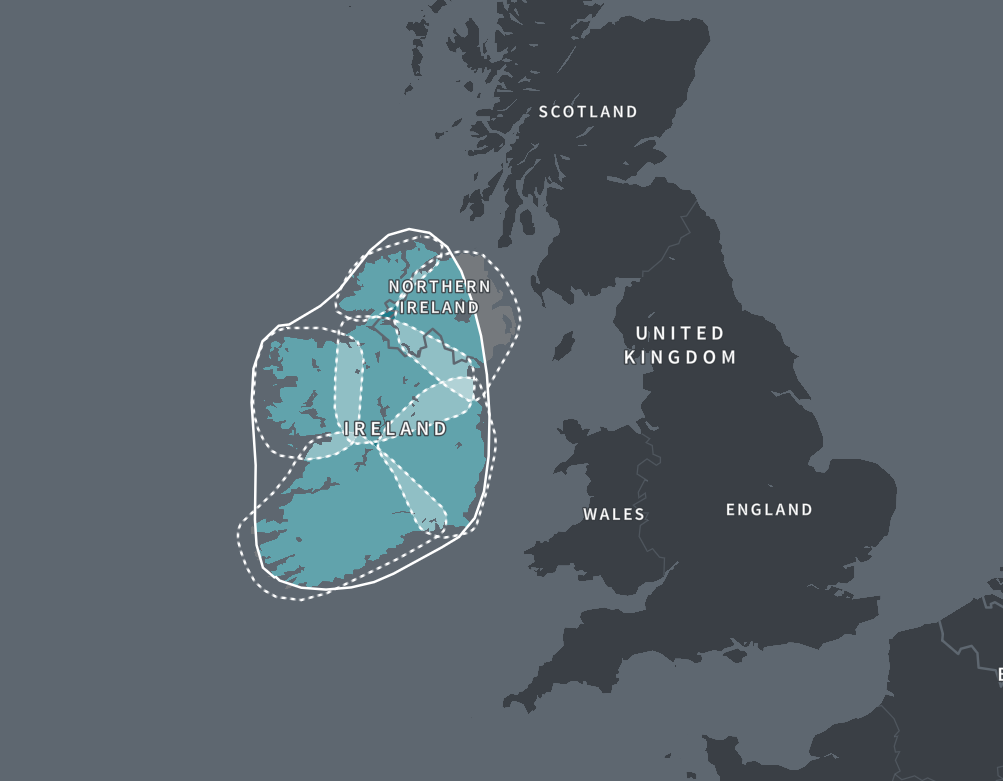
Ireland DNA Region Subregions
The Ireland DNA region is relatively small but it has 6 main subregions. These additional regions help to narrow down the potential regions in which family history researchers may need to look to determine the origin of their Irish ancestors. Each of these subregions has multiple smaller communities which further refine the DNA to very specific areas.
Central Ireland
The Central Ireland subregion as the name suggests covers a small region in the center of Ireland. Located south of Northern Ireland and reaching down as far south as Loughrea. This small region actually has 40 smaller regions from which your DNA may have originated. These are:
- Ballinasloe
- Breedoge River
- Bundoran & Lough Melvin
- Central Cavan
- Central Cavan & North Longford
- Central Roscommon
- Cuilcagh
- Lough Allen
- Lough Gill
- Lough Ree
- North Central Cavan & South West Fermanagh
- North Central Leitrim
- North East Galway
- North East Longford & South Central Cavan
- North East Roscommon
- North East Sligo & North Leitrim
- North Leitrim
- North Leitrim & Bordering Counties
- North Leitrim & North East Sligo
- North Longford & South Leitrim
- North Roscommon
- Roscommon & Bordering Counties
- Seltannasaggart
- Sligo Bay
- South Cavan
- South Cavan & North Meath
- South Central Cavan
- South Central Leitrim
- South East Cavan & North West Meath
- South East Leitrim & North West Cavan
- South Fermanagh, Central Leitrim & North West Cavan
- South Leitrim
- South Leitrim, West Cavan & Bordering Counties
- South Longford
- South Roscommon
- South Roscommon & East Galway
- South West Leitrim
- South West Longford
- Ulster & Leinster Border Counties
- Upper Lough Allen
Connacht Ireland
The Connacht Ireland subregion is located on the north west coast of the Republic of Ireland and covers a relatively small area. Within that small area however there are no fewer than 22 listed communities which include:
- Achill Island
- Carra & Gallen
- East Mayo
- Galway
- Lough Corrib & Lough Mask
- North & South Galway
- North Connacht
- North Connemara
- North East Mayo
- North East Mayo & North West Sligo
- North Mayo
- North West Mayo
- South & Central Mayo
- South Connemara
- South Connemara & the Arans
- South Connemara Islands
- South Mayo
- South Sligo
- South Sligo & North Roscommon
- South West Mayo
- West Roscommon & East Mayo
- West Roscommon, East Mayo & North Galway
Donegal
The Donegal subregion covers the northwestern extremes of the Republic of Ireland as well as regions of northwestern Northern Ireland. It is a small largely coastal region with just 6 additional subregions which are:
- Central Donegal
- Inishowen
- North West Donegal
- South Donegal
- West & South Donegal
- West Donegal
Leinster, Ireland
The Leinster, Ireland region is a large subregion located on the east coast of the Republic of Ireland. It also reaches into the central regions of the country. This region includes 21 additional subregions or communities which include:
- Ballylynan
- Central River Shannon
- East Central Leinster
- East Central Leinster
- East Kilkenny & South Carlow
- East Tipperary & South West Leinster
- East Wexford
- North Central Offaly
- North Leinster
- North West Leinster
- Offaly
- South East Laois
- South East Tipperary & Kilkenny
- South East Wexford
- South Kildare, North Carlow & West Wicklow
- South Leinster
- South Leinster Coast
- South River Barrow
- South Wexford
- West Laois
- Wexford
Munster, Ireland
The Munster Ireland region is located in the southwest of the Republic of Ireland. It consists of some 61 additional subregions and communities which include:
- Beara Peninsula
- Blackwater Estuary
- Central Cork
- Central Munster
- Central Tipperary
- Clare
- Cork Headlands
- Dingle Peninsula
- Doonbeg Bay
- East Beara Peninsula
- East Central Cork
- East Clare
- East Clare & North East Tipperary
- East Clare & South Galway
- East Cork & South East Limerick
- East Dingle Peninsula
- East Kerry & West Limerick
- East Munster & South Leinster
- East River Suir
- East Tipperary
- Galtee Mountains
- Iveragh Peninsula
- Kilkee
- Kilkee & Doonbeg River
- Killarney
- Knockmealdown Mountains
- Limerick Junction
- Loop Head Peninsula
- Lower Shannon Basin
- Miltown Malbay & Inagh
- North & East Cork
- North Central Shannon Estuary
- North Central Tipperary
- North Cork
- North East Cork & Limerick
- North East Kerry
- North East Limerick & North West Tipperary
- North East Munster & South West Leinster
- North Iveragh Peninsula
- North Kerry
- North Kerry & North Cork
- North Kerry & West Limerick
- North River Cloon
- North Tipperary
- North West Clare
- North West Cork
- North West Kerry
- North West Shannon Estuary
- South Central Cork
- South West Clare
- South West Coast of Cork
- South West Cork
- South West Munster
- Waterford
- West Beara Peninsula
- West Central Clare
- West Central Tipperary
- West Clare
- West Cork
- West Dingle Peninsula
- West Iveragh Peninsula
Ulster Ireland
The Ulster, Ireland subregion covers the country of Northern Ireland as well as some of the border regions with the Republic of Ireland. This is a relatively small DNA region but it is further separated down into 49 subregions and communities which include:
- Carlingford & Dundalk
- Castleblaney
- Central Louth
- Central Monaghan
- Central Tyrone & South Derry
- Central Ulster
- Clones & Brookeborough
- Dungannon & Coalisland
- East Armagh & West Down
- East Derry
- East Sperrin Mountains
- Kilkeel
- Kingscourt & Carrickmacross
- Lecale Peninsula
- Lough Neagh
- Louth & Meath
- Maghera
- Newry
- Newry & Ring of Gullion
- North Antrim
- North Central Tyrone
- North Central Ulster
- North Derry
- North East Ulster
- North Fermanagh & West Tyrone
- North Monaghan & South Fermanagh
- North Monaghan & South Tyrone
- North Ulster
- North West Louth & South East Monaghan
- Omagh & Carrickmore
- Pomeroy
- Rathfriland
- Ring of Gullion
- South Armagh & North Louth & East Monaghan
- South Armagh, North Louth & Central Monaghan
- South Armagh, South Down & North Louth
- South Derry & East Tyrone
- South Down
- South East Monaghan
- South East Ulster
- South East Ulster & North East Leinster
- South Louth & East Meath
- South Monaghan & East Cavan
- South Sperrin Mountains
- South Ulster & North Leinster
- South West Derry & West Central Antrim
- South West Tyrone
- Warrenpoint
- West Monaghan & East Fermanagh
Ireland Region History
Prehistoric Ireland
Up until around 16,000 BC the region we know as Ireland today would have been covered in a sheet of ice. As the last glacial ice age came to end this ice sheet would have receded. Although there was no land bridge between the UK and Ireland at that time an ice bridge would remain for thousands of years. The last vestiges of this bridge would have linked Scotland to Northern Ireland and did not fully disappear until around 12,000 BC.
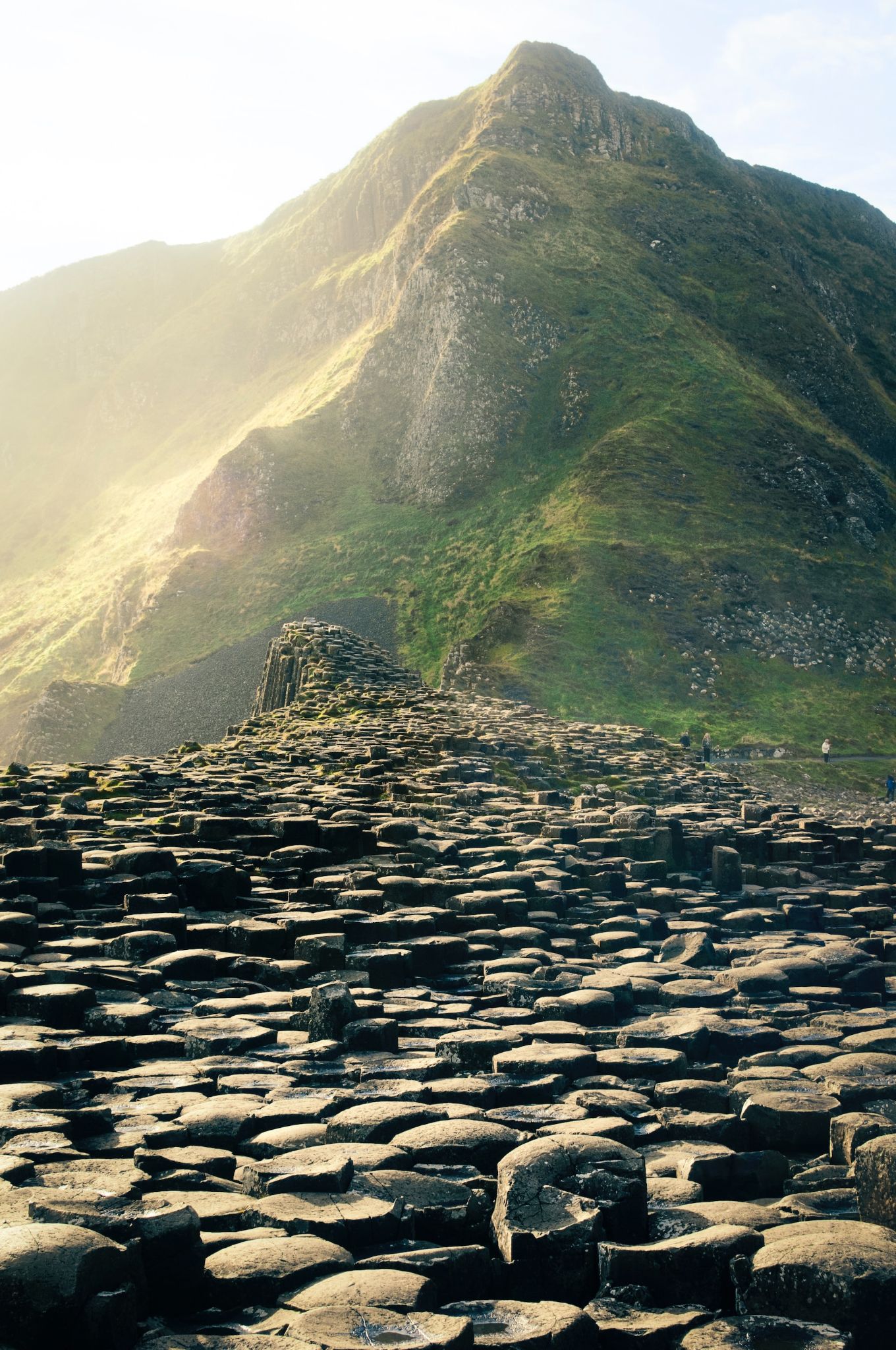
Until recently the earliest indications of human activity in Ireland dated back to around 12,500 BC and was in the form of a bear bone that showed signs of having been butchered with primitive tools. However new finds in 2021 suggest a presence of humans in the region up to 33,000 years ago.
Sustained Occupation and Agriculture
It was around 8,000 BC that signs of sustained occupation started to develop in the region with signs of settled communities found around the island. It would be roughly 4,000 years later that neolithic settlers would start to show signs of agriculture and domestication of animals. Proof of stone monuments and large timber buildings are evidence of a shift in society in the region.
The Celts
Today Ireland is considered a very Celtic region but the Celts did not actually arrive from Mainland Europe until fairly recently. It is thought the Celts arrived through four separate invasions by Celtic tribes. These were the Priteni, Belgae (northern Gaul), Laighin tribes (Brittany region), Milesians (either northern Iberia or southern Gaul)
The second wave of invasion in the form of the Belgae happened around the sixth century BC and the lack of evidence for a mass migration supports the theory that it was a gradual occupation by various tribes in separate invasions.
The Romans
The Roman Empire arrived on the shores of Britain in 43AD and quickly made their presence felt. Scotland and Ireland were targeted by the Romans but they did not make a serious effort to invade and occupy.
Ireland would remain a Celtic stronghold while in most of the rest of Britain Rome stamped out the culture. The languages and culture still thrived in the region and in many respects still do today.
The Normans
In 1169, an expedition of Cambro-Norman knights, with an army of about 600 men, made landfall at Bannow Strand in what is present-day County Wexford. This was led by Richard de Clare, also known as 'Strongbow' owing to his archery prowess. The invasion, which coincided with a period of renewed Norman expansion, was at the invitation of Dermot Mac Murrough, the King of Leinster.
This would be the beginning of centuries of invasion and subjugation of the peoples of Ireland which saw powers from England seeking and gaining control. Battles and conflicts would take place over centuries and occupation by the British saw widespread poverty and hardships.
How Did You Get Ireland Region DNA?
If you already know that you had family who came from Ireland or any of the neighboring states then you know why you have Ireland region DNA. If this result came as a surprise you may not know how exactly you came by DNA from this region.
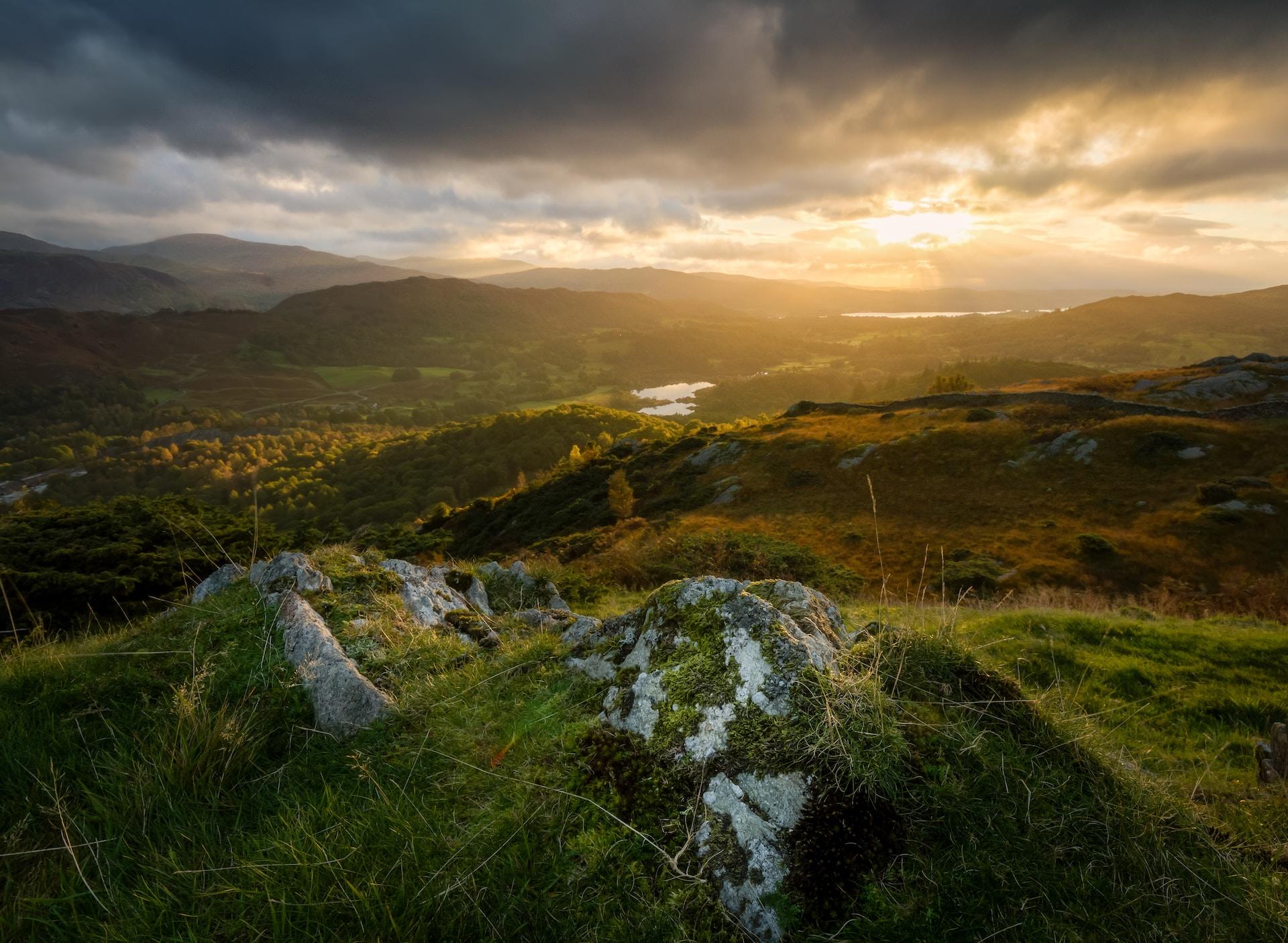
If you have a sizable percentage of DNA from this region then it is likely you have an ancestor who was born in or close to the country of Ireland.
Is the Result Accurate?
When it comes to ethnicity estimates the higher the percentage you have from a certain region the more likely it is to be accurate. If your percentage is low, however, then it is harder to pinpoint exactly where your most recent ancestors came from.
A low result could mean a distant ancestor from that region. It is best to focus on your highest rated region's matches to determine where your ancestors came from more recently. A low percentage can often be hard to locate because the ancestor in question could be many generations back in your tree.
How to Research my Ancestry from These Regions
The results of a DNA ethnicity test are of course a great place to start especially if there is an unexpected result found in the report. As always of course the DNA cannot tell the whole story and we need to actually do the research work.
A percentage on an ethnicity estimate means very little unless you follow through and start building up your family tree. The relevant ancestors may be several generations back and it may take a lot of research to discover who they were.
If you have specific regions mentioned in your report then you have a good idea of where your ancestor may have originated from. Ancestry DNA even has migratory information from some of these regions through to the final settlement places in the United States or elsewhere in the world.
Using Ancestry you may be able to determine not only who your ancestors were from the British Isles but perhaps the reason they decided to move.
Irish Migration
Irish migration around the world has been taking place for centuries with early settlements of raiding Irish during the Roman period seizing lands in coastal regions of Britain. A region wracked with conflict and later British occupation the Irish have been leaving the Island in waves in search of work and better conditions.
Fleeing brutal rule by Britain, civil wars and devastating famines the Irish have made a huge impact on the world and especially in the United States where millions of people identify as Irish American.
Final Thoughts
The early peoples of Ireland arrived 33,000 years ago and thrived for thousands of years. During the 1st millennia BC Celtic tribes started to target the region for invasion and small waves of conquest turned the region into a stronghold for Celts.
These fierce peoples held off the Romans but could not repeat the feat with the Normans in the 12th century. Despite being eventually defeated by the Normans and facing centuries of conflict with England a Celtic spirit has held strong and the peoples of Ireland have spread around the globe.
Link To or Reference This Page
We spent a lot of time downloading, cleaning, merging, and formatting the data that is shown on the site.
If you found the data or information on this page useful in your research, please use the tool below to properly cite or reference Name Census as the source. We appreciate your support!
-
<a href="https://namecensus.com/blog/what-is-ireland-dna-ethnicity-on-ancestry/">What is [Ireland ](/blog/traditional-irish-naming-patterns-and-conventions/)DNA Ethnicity on Ancestry?</a>
-
"What is [Ireland ](/blog/traditional-irish-naming-patterns-and-conventions/)DNA Ethnicity on Ancestry?". NameCensus.com. Accessed on May 4, 2024. https://namecensus.com/blog/what-is-ireland-dna-ethnicity-on-ancestry/.
-
"What is [Ireland ](/blog/traditional-irish-naming-patterns-and-conventions/)DNA Ethnicity on Ancestry?". NameCensus.com, https://namecensus.com/blog/what-is-ireland-dna-ethnicity-on-ancestry/. Accessed 4 May, 2024
-
What is [Ireland ](/blog/traditional-irish-naming-patterns-and-conventions/)DNA Ethnicity on Ancestry?. NameCensus.com. Retrieved from https://namecensus.com/blog/what-is-ireland-dna-ethnicity-on-ancestry/.
